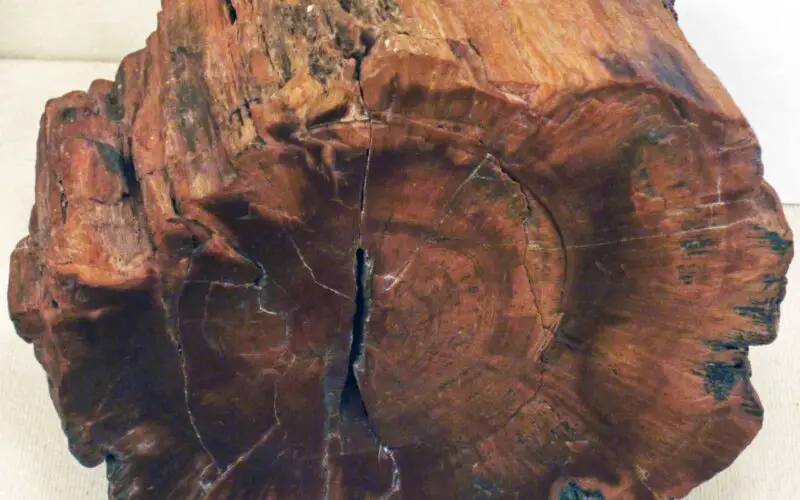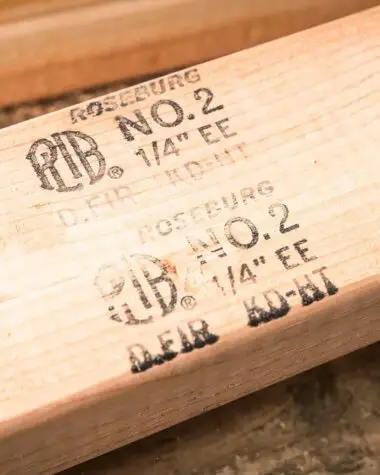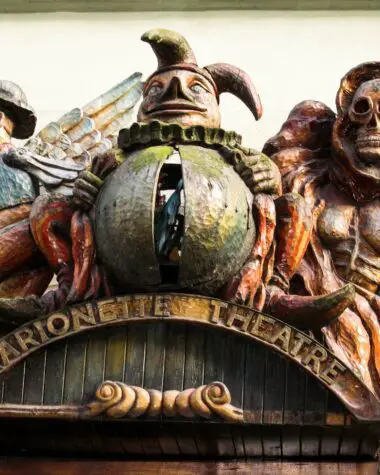Have you visited The Petrified National Forest in the Arizona desert? The trees in this prehistoric, semi-tropical forest from the Late Triassic Period have created a magnificent view since its creation. But what happened to these woods that made them this way?
What Is Petrified Wood?
Petrified wood is considered a fossil which means it was formed when the plant material is buried by sediment. When wood is buried deep in the muck, it is protected from decay by exposure to oxygen and organisms.
And as wood is preserved in deep water, the minerals in groundwater flow through the sediment, replacing the original plant material like silica, calcite, and pyrite. There are even very expensive minerals that can infiltrate wood, like opal. The result is a fossil made from the original woody material that often exhibits preserved details of the tree bark, wood, and cellular structures.
How Long Does Wood Become Petrified?
It naturally takes millions of years to petrify a wood. Petrified wood is from fallen trees that usually get washed down in a river or have fallen into a lake. This wood becomes buried under layers of mud and ash from volcanoes and other materials.
Sealed under these rotting layers is materially deprived of oxygen which is the necessary ingredient for decay. As the organic tissues break down over time, the resulting open sections are filled with minerals like silica.
Over millions of years, the minerals that settle inside the crevices of wood crystallize to form a stone-like material known as petrified wood. Scientifically, it is not right to call it “wood” anymore because it has become like the minerals that have infiltrated the wooden material.
What Are The Ways To Petrify Woods
Contrary to belief, wood can petrify quickly, and it certainly takes less time to decay in a given environment. Wood can be petrified using natural petrification and infiltration of silica-rich water.
Natural Petrification Or Silicification (Taking Millions Of Years)
The first petrification process involves wood decaying in a hot, silica-rich environment. Every molecule of the wood will decompose and will be carried away afterward. Every molecule lost will be replaced by a molecule of silica. After the process is complete, the wood will become very hard and change in color.
The mineral impurities in silica will bring about an array of beautiful colors in the final product. And because of the glorious result, the wood may be polished and become a prized or museum piece. Once silicification is complete, no organic material remains.
The light and dark portions of the tree’s growth rings may decay at different rates. Therefore, the tree rings may be preserved if the minerals change color over time. Most of the petrified trees in the Petrified “Forest” of Arizona are preserved using this technique.
Infiltration Of Silica-Rich Water (Takes Only Years To Happen)
The second technique is faster. Experts say the results are comparable to the natural petrification process. This process uses complete infiltration of the wood by silica-rich water.
The silica, calcite, or a combination of both, will infiltrate the wood’s pores, stopping the complete decomposition of the wood. In this second technique, individual cells will be well preserved while the tree ring patterns may still be seen. The petrified trees in Yellowstone Park were made using this process.
Petrified Wood All Over The World
There are petrified forests scattered worldwide. The National Park has protected most of these places from exploitation, while some are declared world heritage sites.
Petrified Forest National Park
This is possibly the most popular petrified park in the world. The Petrified Forest National Park near Holbrook in northeastern Arizona formed about 225 million years ago. Back then, this was a lowland with a tropical climate and forest.
Rivers made by tropical rainstorms washed mud and other sediments. This is where you would find giant coniferous trees 9 feet in diameter and towering 200 feet that lived and died. Rich river sediments buried fallen trees and broken branches from these trees. Meanwhile, nearby volcanoes erupted numerous times, and the ash and silica buried the area.
Eruptions caused large dense clouds of ash that buried the area, and this quick cover prevented anything from escaping. Of course, nothing could also move in, even oxygen and insects. In time, the soluble ash was dissolved by groundwater through the sediments. The dissolved ash became the source of silica that replaced the plant debris. This application process creates petrified wood.
Australian Peanut Wood
Australian peanut wood is petrified wood. The name was from the wood’s white markings, which are the size and shape of peanuts. The markings are boreholes made in the wood by a shipworm, a tiny clam species.
Conclusion
Petrified wood is considered a fossil. It was formed when the plant material was buried by sediment and infiltrated by silica-rich groundwater. There are several petrified wood forests worldwide, but the most popular is the Petrified Forest National Park in Holbrook, Arizona, where lovely petrified trees abound. These facts are some of the reasons why woods are considered unique and special.








